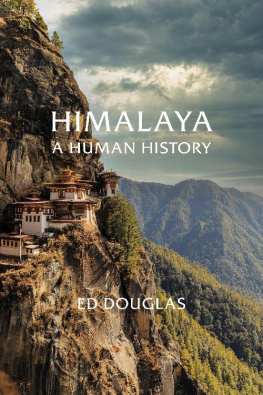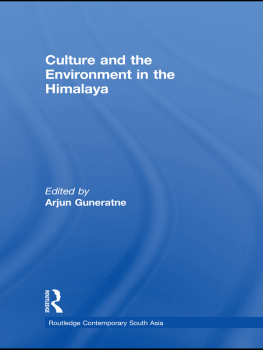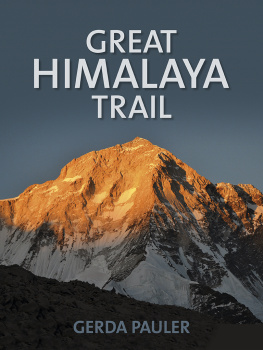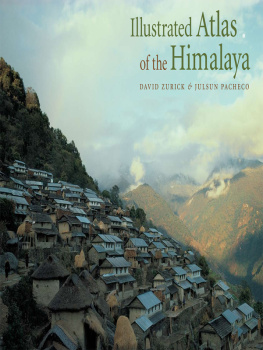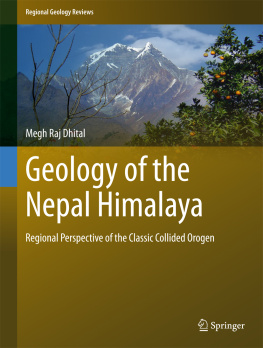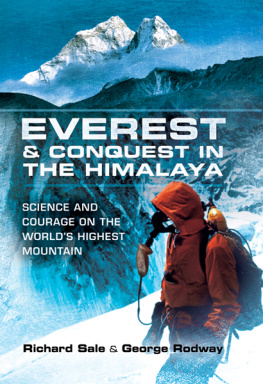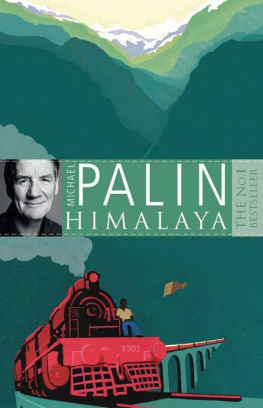
Ed Douglas
HIMALAYA
A Human History

Contents
About the Author
Ed Douglas is an award-winning writer who has reported from the Himalaya for over twenty-five years, covering the Maoist insurgency in Nepal and the Tibetan occupation. The author of a dozen books, including a biography of Tenzing Norgay, he is also a climber with first ascents in the Himalaya, and edits the Alpine Journal. He lives in Sheffield.
For Himalayan people, wherever
List of Illustrations
All maps Bill Donohoe 2020. The following images in the picture sections are the following organisations and individuals and/or reproduced with their permission:
: Image courtesy of the Earth Science and Remote Sensing Unit, NASA Johnson Space Center
: with thanks to Mike Searle / Colliding Continents
: Dongju Zhang, Lanzhou University
: blickwinkel / Alamy Stock Photo
: British Library Board. All Rights Reserved / Bridgeman Images
: Freddy Spencer Chapman
: Bundesarchiv, Bild 135-KA-06-039 / reproduced under the Creative Commons Attribution-Share Alike 3.0 Germany licence
: Xinhua / Alamy Stock Photo
: Pictorial Press Ltd / Alamy
: National Portrait Gallery, London
: President and Fellows of Harvard College. Arnold Arboretum Archives
: Royal Geographical Society / Getty
: Bridgeman Images
: Art Institute of Chicago
: Ed Douglas
: Asian Purchase Campaign Endowment and Robert Ross Fund
: with thanks to John V. Bellezza
: Everett and Ann McNear Collection
: Royal Collection Trust / Her Majesty Queen Elizabeth II 2020
: Hildegard Diemberger
: Florilegius / Alamy
: Ethnological Museum of Berlin
: IndianMiniaturePaintings / Peter Blohm
: National Army Museum
: Art Collection 2 / Alamy
: Alpine Club Photo Library, London
: Archives and Special Collections, Western Libraries, Western University
: Preus Museum
: Ernst Krause, Federal Archives
: Ernst Schfer / Bundesarchiv
: Archibald Steele
: Courtesy of Istituto Italiano per lAfrica e lOriente (Is.I.A.O.) in l.c.a. and Ministero Degli Affari Esteri e della Cooperazione Internazionale
: Nick Gulotta
: Keystone Press / Alamy Stock Photo
: Courtesy of Michael Leonard
: George Bush Presidential Library and Museum
Birth, sickness, ageing and death flow ever onward, a river without ford or bridge Have you prepared yourself a boat?
Dampa Sangye (died 1117)
This is a land of hearsay and rumour:
If you dig down and look, youll find nothing
But hearsay and rumour
Heaped up beneath every home,
So this is a land of hearsay and rumour,
A country standing on hearsay and rumour,
A country that has risen up on hearsay and rumour
Bhupi Sherchan (19351989)
List of Maps
1
Pilgrims
The Earth asked Vishnu, Why do you come in the form of mountains and not in your own form? Vishnu replied: The pleasure that exists in mountains is greater than that of animate beings, for they feel no heat, nor cold, nor pain, nor anger, nor fear, nor pleasure. We three gods as mountains will reside in the earth for the benefit of mankind.
In the late summer of 1995 I flew to India for my first experience of climbing in the Himalaya. The monsoon was still strong and in those days, a quarter of a century ago, parts of Delhi flooded more readily; many lower-lying streets were submerged in brown water. It was still raining as we drove north in a bus, stopping for a night in Rishikesh on the banks of the swollen Ganges. The Beatles studied transcendental meditation here in 1968 with the Maharishi Mahesh Yogi, turning on millions of young Westerners to eastern spiritual practices. After I had taken LSD, George Harrison recalled, a lingering thought stayed with me, and the thought was the yogis of the Himalayas. That was part of the reason I went to India. Ravi [Shankar] and the sitar were excuses; although they were a very important part of it, it was a search for a spiritual connection. It occurred to me only much later that I had been lifted into the mountains on the last gasp of the same cultural tide, upstairs in my suburban bedroom in the early 1980s, listening to old Bob Dylan records and reading stories of my climbing heroes high in the faraway, mythical Himalaya.
Next day we reached the mountains, half-submerged in a torrential downpour. The roads ran with water; mist clung to rock faces that overhung the roof of the bus. Heavy cloud shrouded the peaks. A mile or so from the village of Gangotri, in what was then part of Uttar Pradesh, the bus stopped abruptly. Huge granite boulders had tumbled down from a cliff above, loosened by the rain. It would take explosives and bulldozers to clear the way. For now, this was the end of the road. We peered up at the unstable slope wondering about the next rock fall, anxious to get going and out of the way. A number of lean and eager men surrounded the bus, grinning wildly, dressed in thin cotton shorts and shirts and holding plastic sheeting around their shoulders, their only protection against the rain. A price was agreed and our gear continued into the village on their backs. We followed, sheltering under umbrellas. It was as though Id found a door marked adventure and stepped through it.
The scale of the Himalaya is disorienting: not simply muscular but steroidal. On that first expedition, the intensity of the mountains felt overwhelming, even oppressive. Everything was bigger than I had experienced before: the peaks themselves, the rivers, the rock falls, the avalanches, the glaciers, the legends and myths. From the plains of India, the range was like a white wall, a castle of impossible dreams, a rampart separating South and Central Asia, China from India. The clash of their competing interests in the mountains on their respective borders has usually been at the expense of the people who live there, with China now occupying Tibet. In 1962, the worlds two most populous nations had even gone to war in the Himalaya.
There are few places in the world where geography inspires the human imagination to such a degree. There are longer mountain ranges: the Andes are the longest at seven thousand kilometres. But there are none higher. The Himalaya are themselves part of a vast highland region that runs in a crescent for four thousand kilometres from Kyrgyzstan in the west to Myanmar in the east and includes the Pamir, Hindu Kush and Karakoram ranges. Around four hundred mountains on earth exceed 7,000 metres and theyre all located here, including the magical fourteen that top 8,000.
The Himalaya range itself makes up the eastern two-thirds of this region, an area of 600,000 square kilometres between the Indus in the west and the Brahmaputra in the east, at the same latitudes as the Middle East, North Africa, Texas and northern Mexico. The range is anchored at either end by two great mountains, Nanga Parbat in Pakistan and Namche Barwa where Tibets great river the Yarlung Tsangpo bends sharply south to become Indias Brahmaputra. The region includes part of the high plateau of Tibet, the highest and largest plateau on earth, five times the size of France and with an average altitude of 4,500 metres: the roof of the world.
The Himalayas diversity is astonishing and multifaceted. The western portion, including the Indian regions of Ladakh and Zanskar, are semi-desert, dry and cold for much of the year. The eastern end, the watershed of the Brahmaputra, includes some of the wettest places on earth, with precipitation in excess of ten metres a year. Nowhere is this heterogeneity more marked that in the Himalayas vertical relief. For every kilometre you climb, average temperatures drop by more than six degrees Celsius. Altitude in this regard mimics latitude, meaning that with a few kilometres of altitude gain, you can travel the equivalent of thousands of kilometres in latitude, from the tropics to the polar ice caps. The amount of ice locked away in the glaciers of the Himalaya and Karakoram, now melting rapidly as the climate heats up, has prompted geographers to call the region the Third Pole.
Next page
